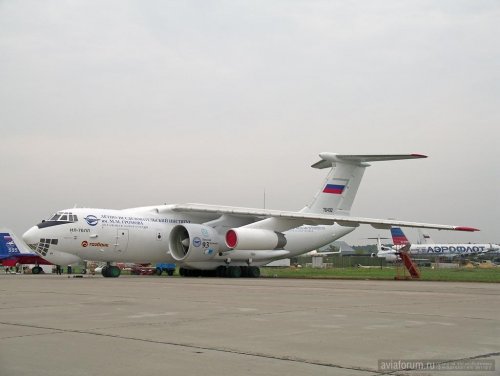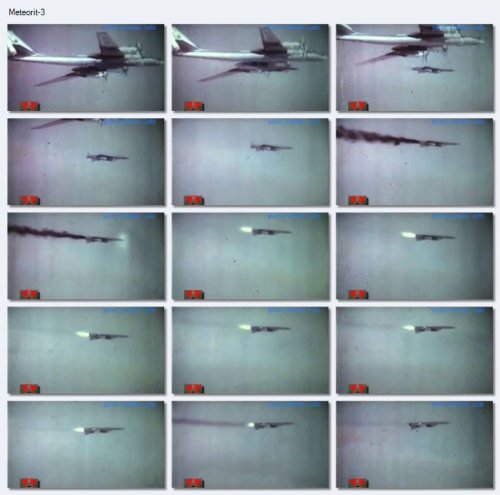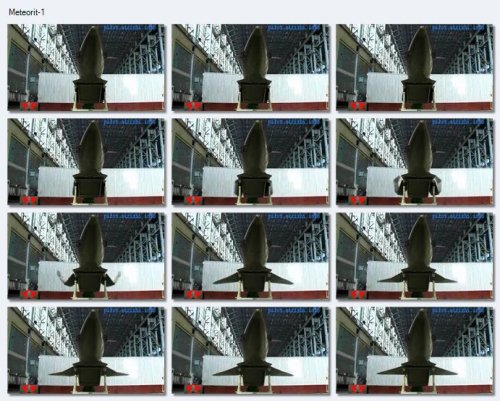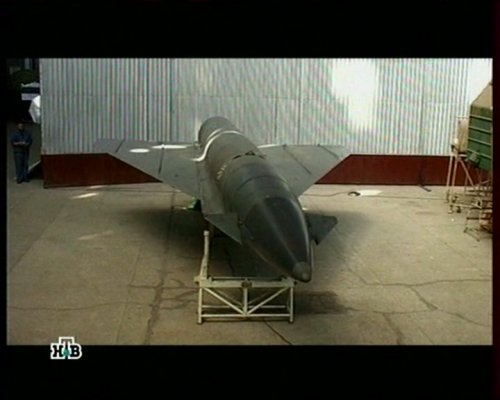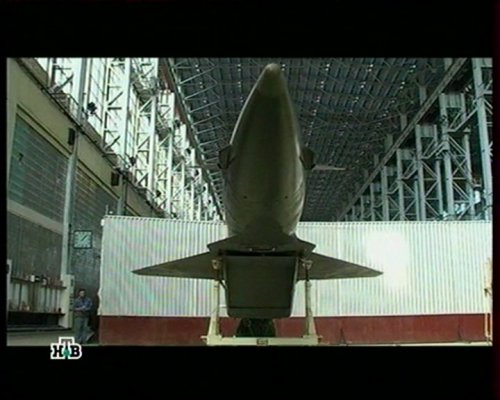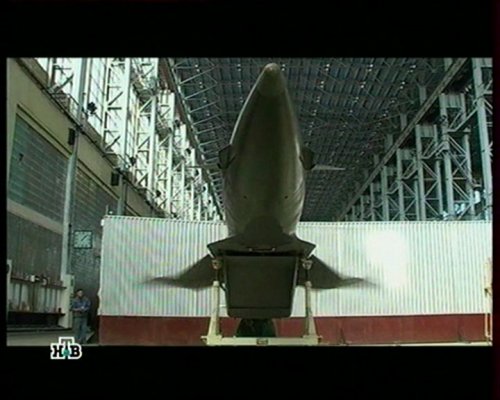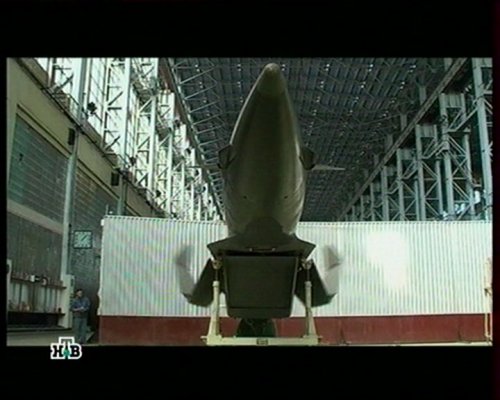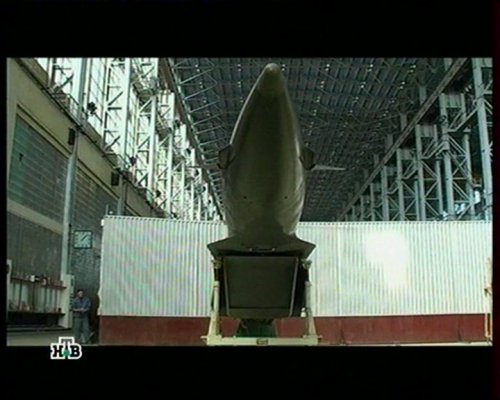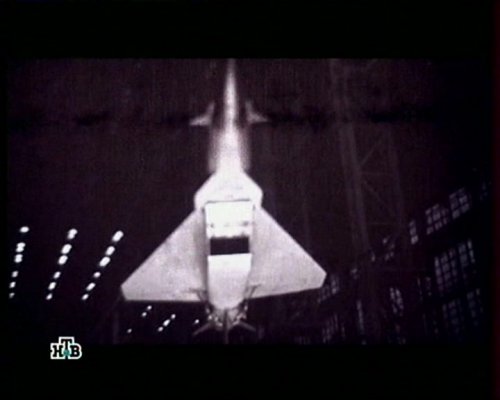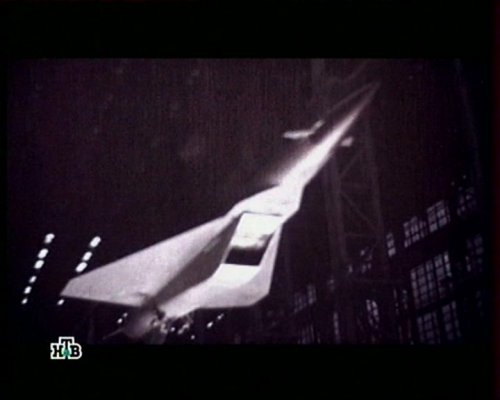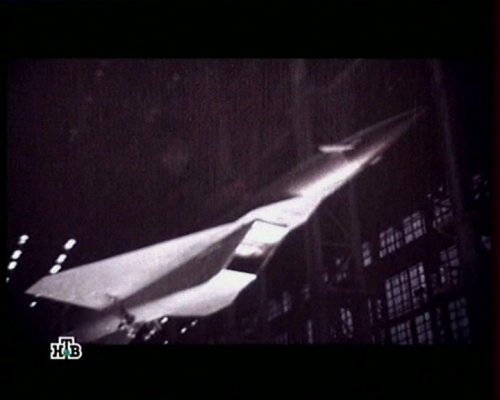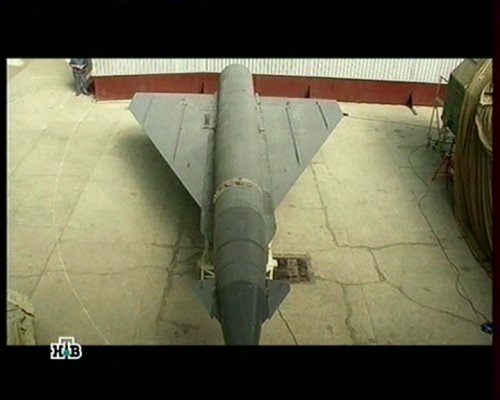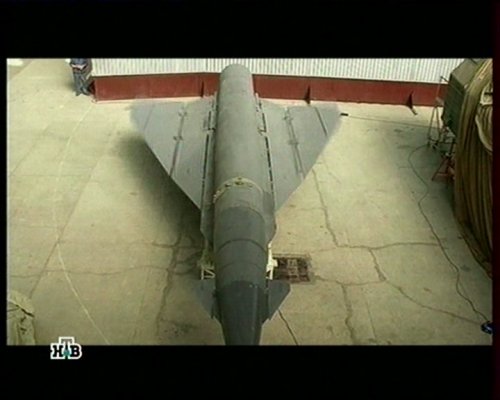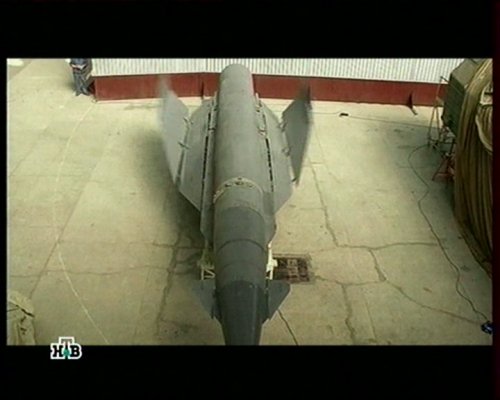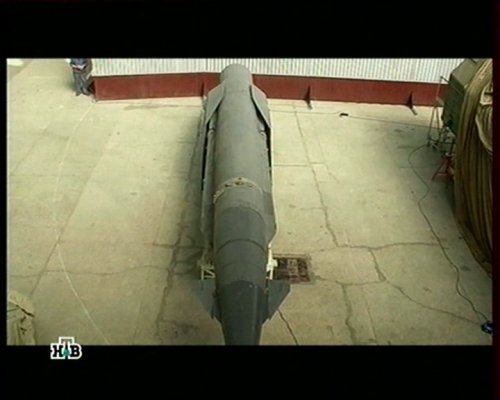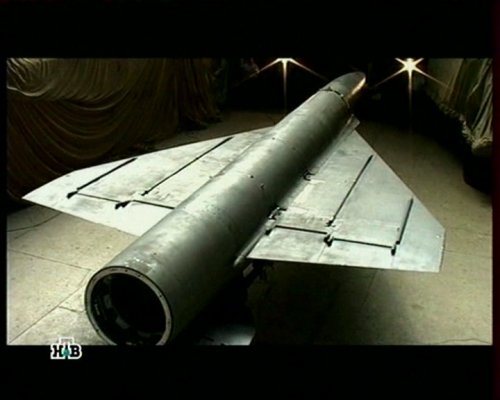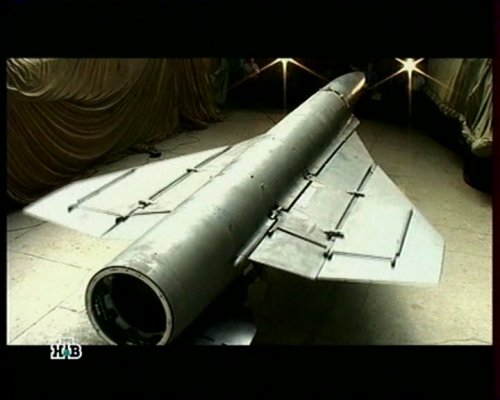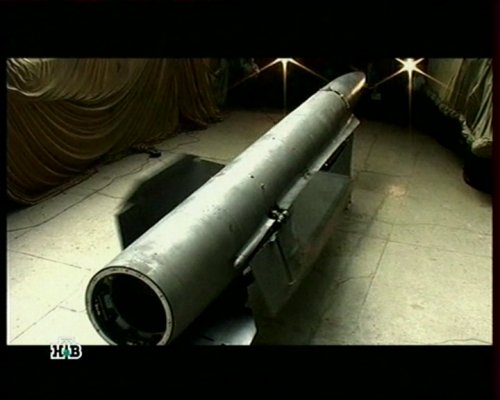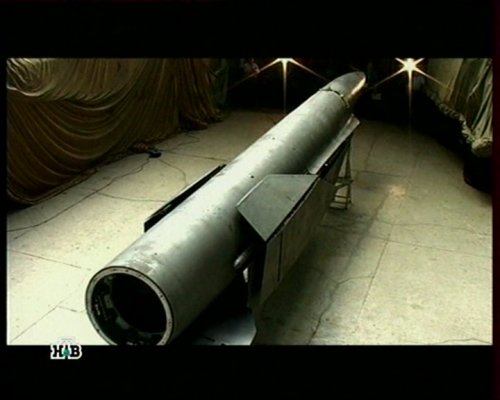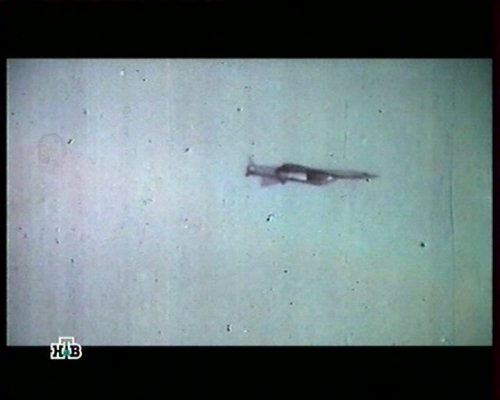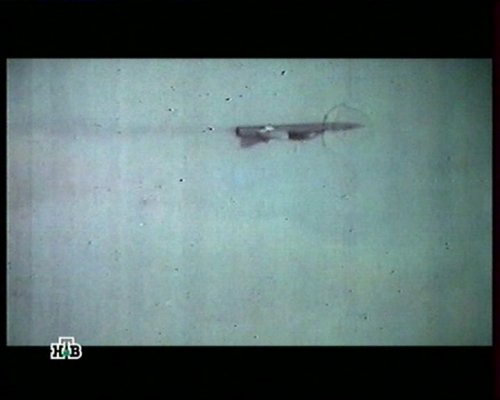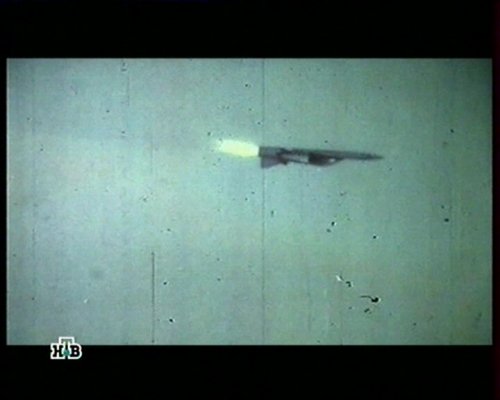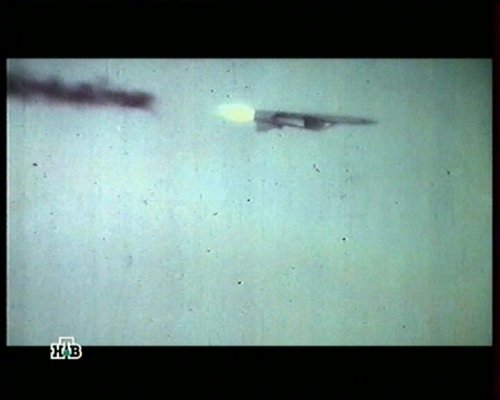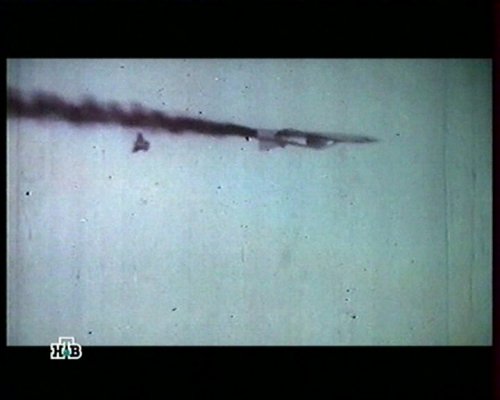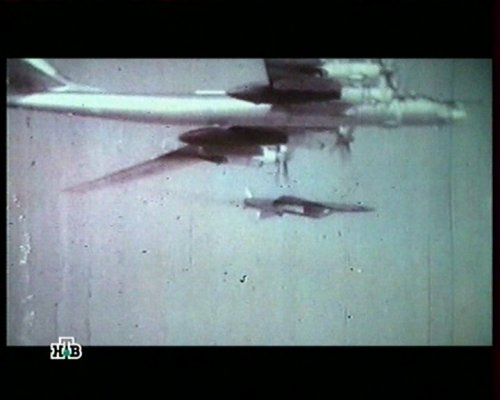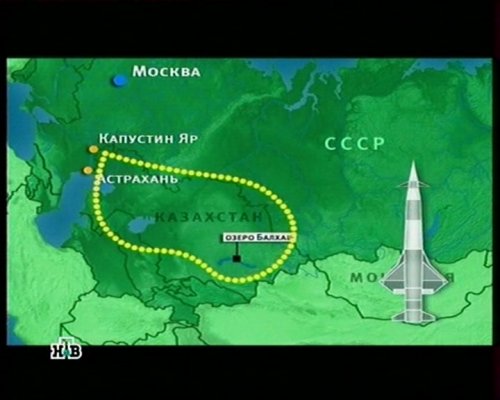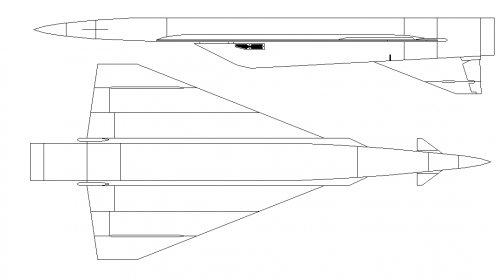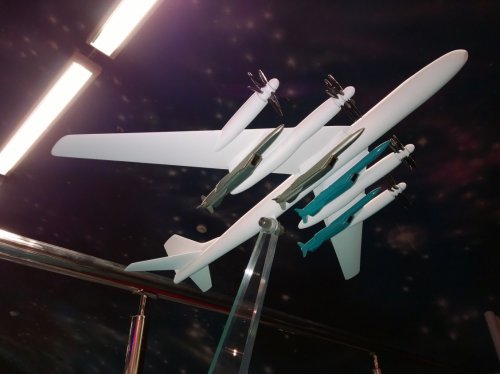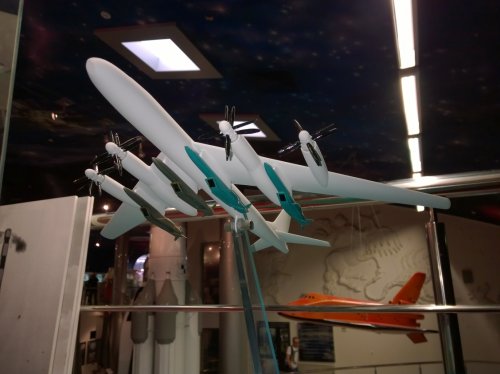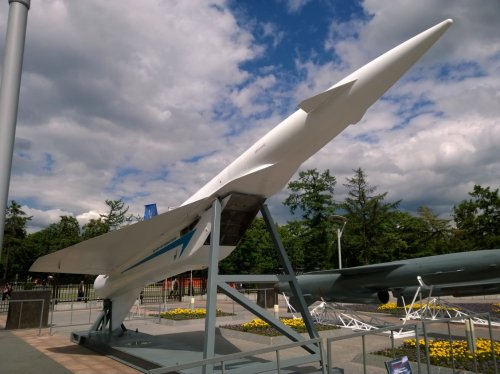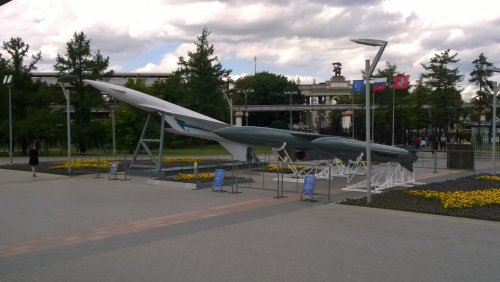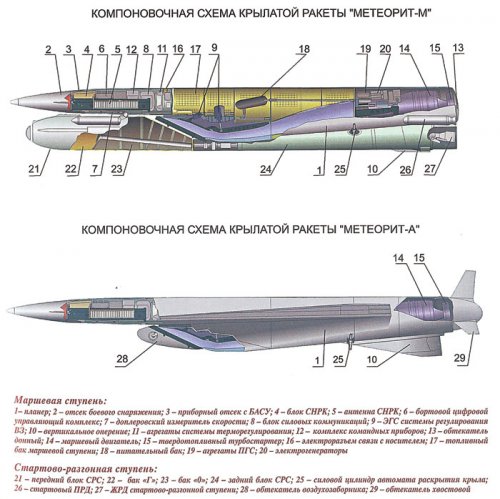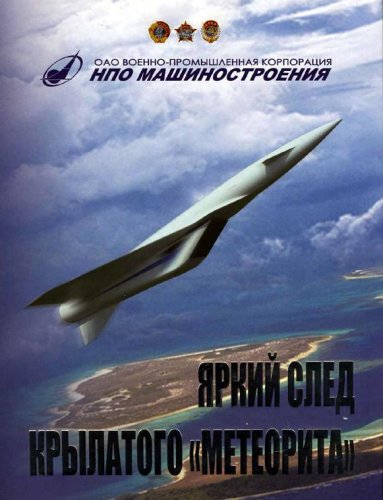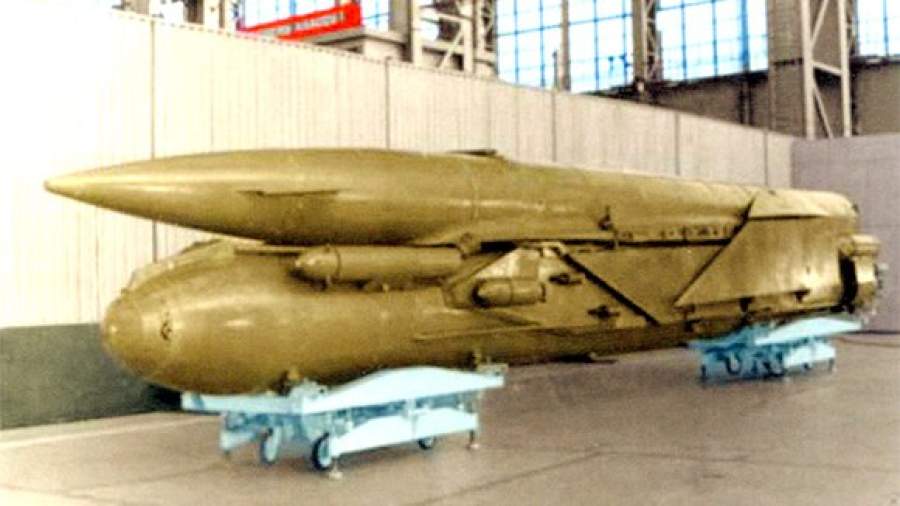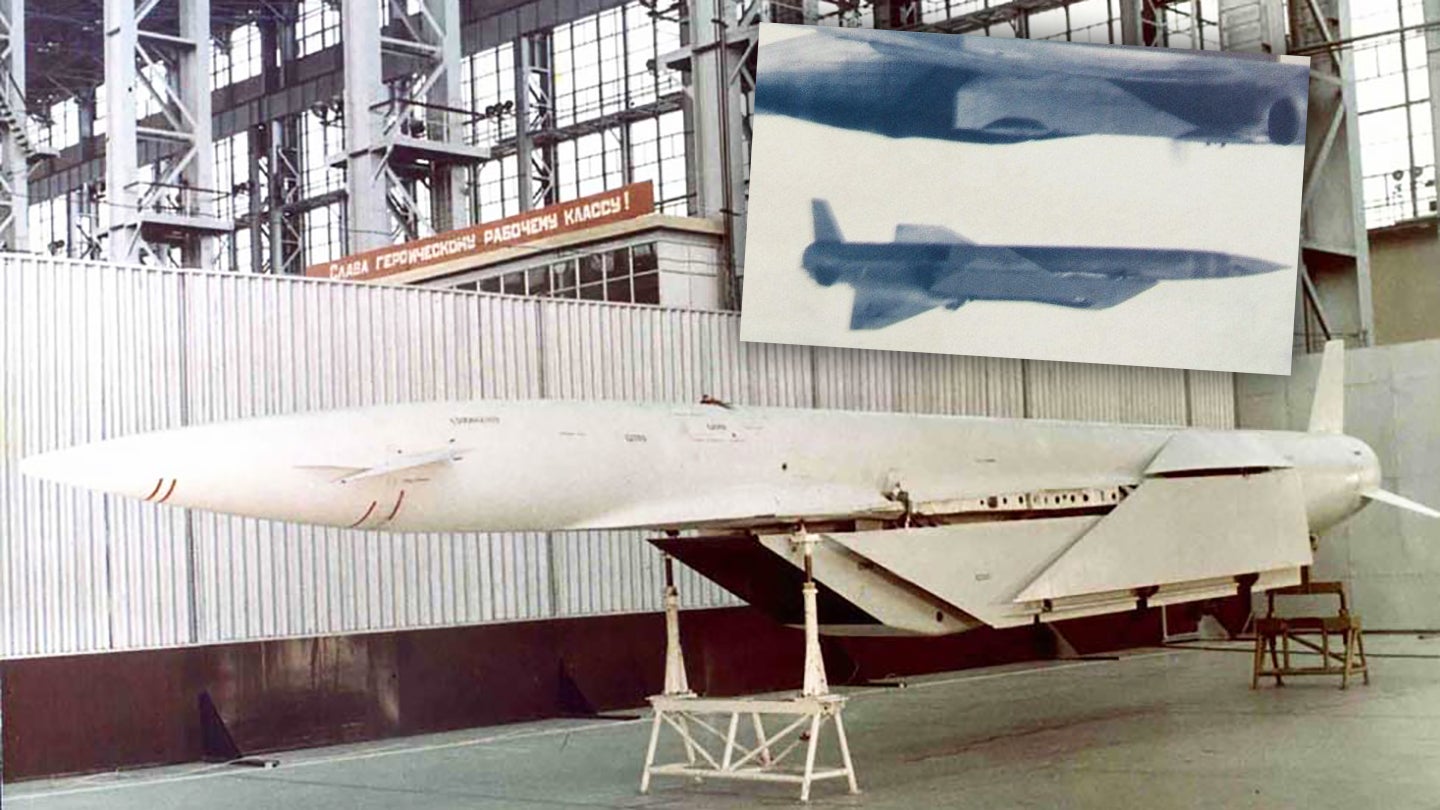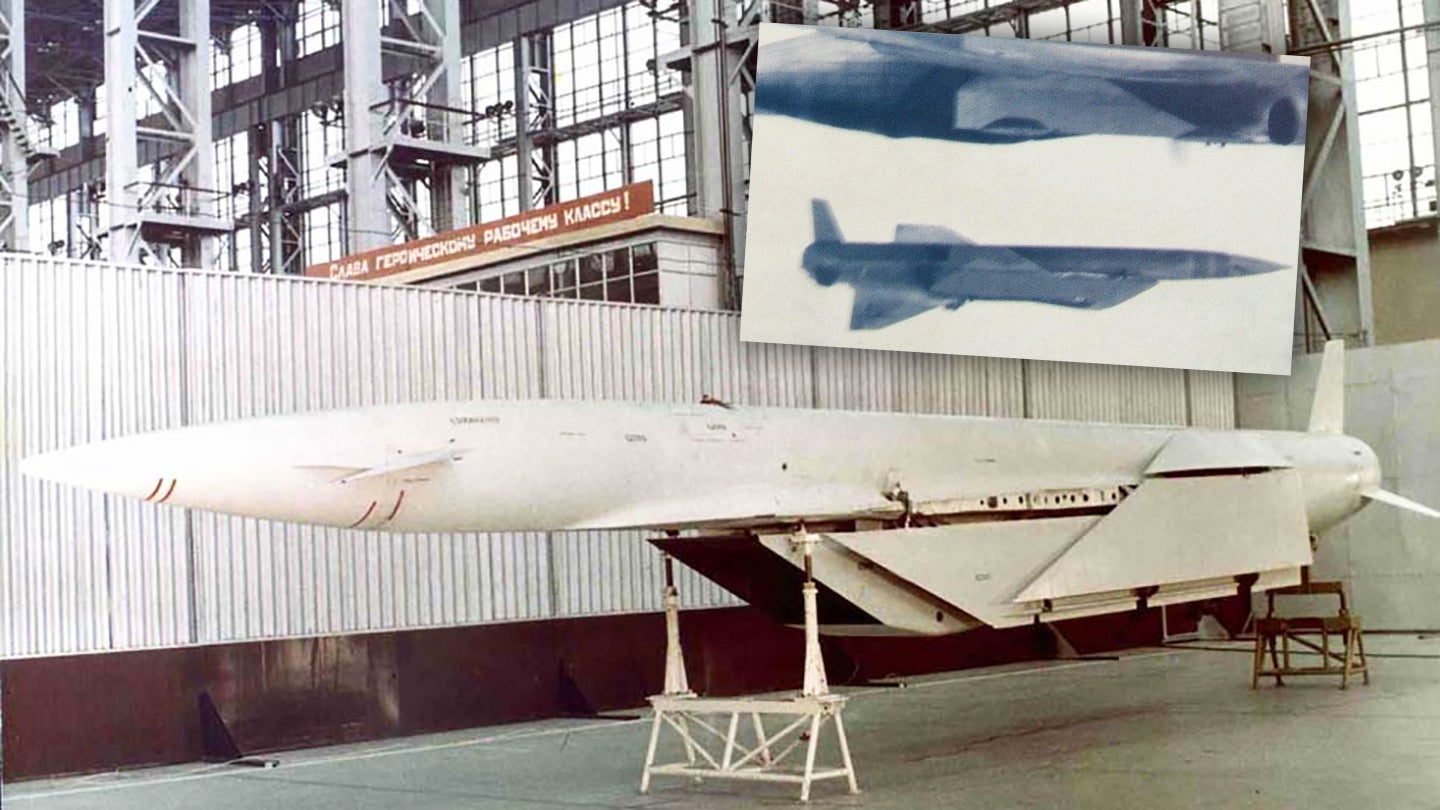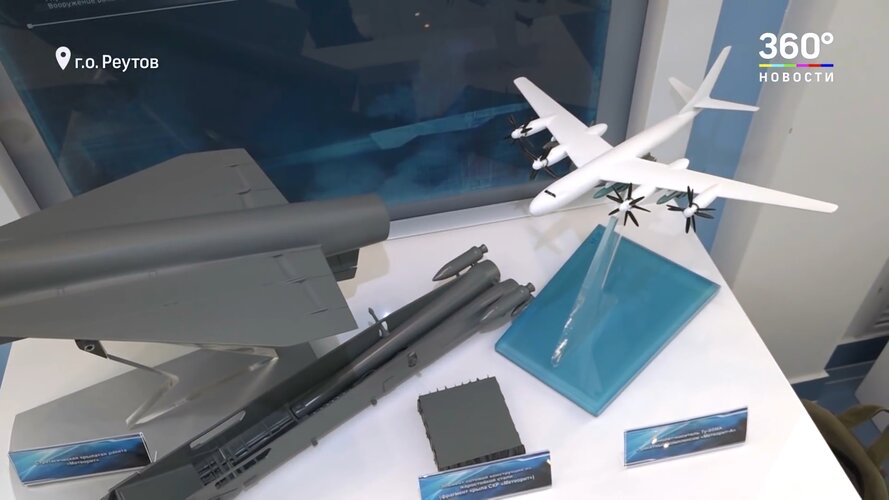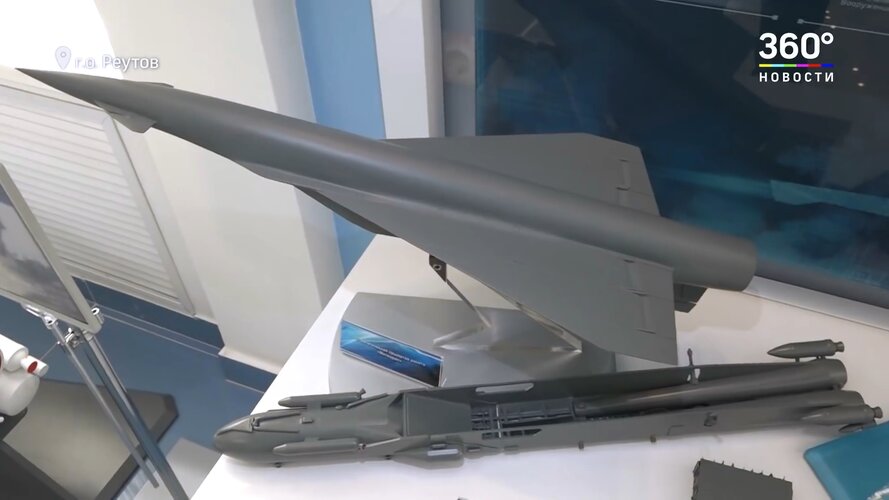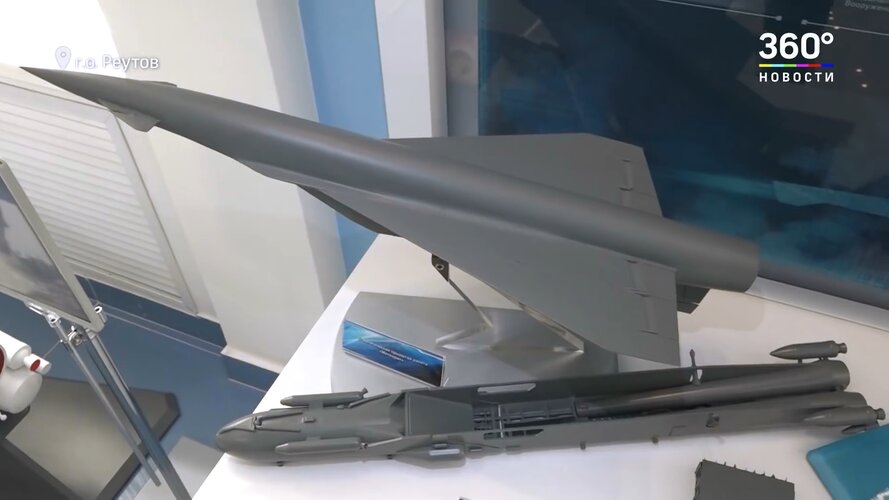Flight manmade "Meteorite"
Cruise missiles almost shaken strategic nuclear parity
Michael Kardashev
About the Author: Michael H. Kardashev - an independent expert for more than 20 years working in TsNIIMash, led the research sector at the Center for System Studies.
Tags: arms , weapons , missiles , air defense
armament, weapons, missiles, air defense Cruise missile "meteorite-A" at the International Aviation and Space Show in Zhukovsky. Photo by Victor Litovkina Sitting by the radar screens of air defense operators closely monitor rapidly moving air target mark. The speed of its flight was extraordinary - three times the speed of sound. Suddenly blip disappeared from the screens, but after awhile reappeared. Unusual flying object that can become invisible to radar, was undergoing tests newest domestic strategic cruise missile "meteorite." On International Air Show held in Zhukovsky near Moscow in the summer of 2007, apart from the main exposure was skyward unusual in its what- then form futuristic winged aircraft. On the plate was dry at the exhibit reads: "JSC" NPO engineering. " "Meteorite-A." Supersonic cruise missile air-based long-range, allowing strikes on enemy targets without entering the zone of the active defenses. Equipped with turbojet sustainer and after the start of the drop-down in flight wing. Has inertial control system with additional correction of the flight path. In developing missiles (70-80-ies), a number of unique systems. " Most visitors passing by the airshow reading event data moved on. Indeed, the text labels that little could be understood. Some missile with a range of strange and unique systems of some mysterious. At this time in the sky performed aerobatics world famous MiG-29 and Su-27. It was much more interesting. Meanwhile, standing aside the missile was one of the most unique developments in the history of rocketry. Only a few visitors up to her amazement, cried: "Yes, it's" meteorite "- and happy, photographed next to the exhibit. Many of them 30 years ago stood at the drawing boards chelomeevskogo KB Reutov and drew her first contours. threat to strategic parity In 1972 the U.S. launched work on the creation of a qualitatively new kind of strategic offensive weapons - stealth low-flying subsonic strategic cruise missiles. Develop sea-based cruise missiles BGM-109A «Tomahawk" air-based AGM-86B and ground-based GLCM had amazing TTX. Launch mass "Tomahawk" was about 1.45 m, maximum range - 2,5 thousand km, speed - 885 km / h, altitude - 30-150 m, length - 6.25 m, diameter of the case - 0.52 m, accuracy is several times higher than that of an ICBM. To launch the missile could have used standard torpedo tubes 533 mm. First time in the history of rocketry strategic missiles on weight and dimensions equal the tactical missiles. Essentially, it was a revolution in the means of delivering nuclear weapons. Submarines, surface ships, strategic bombers and land-based mobile launchers could be deployed to 7 thousand cruise missiles. The result was a serious threat to breach a military-strategic balance. To parry a new threat in 1976 by the decision of the Soviet government began to develop missiles with subsonic strategic cruise missiles, like the American. The head developer of the sea-based "Garnet" became Sverdlovsk KB "Innovator" (Chief Designer Leo Lyulev) and complex air-based X-55 - Dubna "Raduga" (general designer Igor Seleznev). These missiles were to be symmetrical response to the new U.S. missiles. However, significantly large number of marine and aircraft carriers, as well as the presence of the U.S. bases near Soviet territory predetermine their future excellence in the deployment of a new kind of offensive weapons. As an asymmetric response to American cruise missiles of a new generation engineering CDB Chief Designer Vladimir Chelomei proposed to create an entirely new high-altitude supersonic cruise missile possessing long range and low radar signature, the ability to effectively overcome the enemy air defenses. Her starting weight was to be about 6-8 m, speed - three times the speed of sound (M = 3), range - twice more than the KR U.S. level radar visibility - two - three orders of magnitude less than existing cruise missiles, precision shooting (CWE) - a few hundred meters. The rocket was to be standardized for sea and air-based. first supersonic cruise missiles Work on the creation of high-altitude supersonic cruise missiles were launched in the 1950s. In the United States from 1950 to 1957 developed supersonic intercontinental cruise missile (MCS) ground-based "Navajo." In 1957, work on the rocket were discontinued. Unique in the history of rocketry MKP, being armed, was an American "Snark", but she had a subsonic speed. In the Soviet Union since 1954 developed supersonic high-altitude ground-based MCS "The Tempest" (KB Seeds Lavochkin) and "Buran" (Vladimir Myasishcheva KB). Cruising speed missile flight was 3.1 m, height - from 17 to 26 km. Work on these missiles were discontinued in 1957, respectively and 1960, the CDM "The Tempest" are undergoing flight tests. MKP had considerable weight and dimensions. Starting weight of "Storm" was 98.3 tons, "Buran" - 175.5 m, and "Navajo" - 135 tons Even the smallest of these missiles - "The Tempest" - had a length of about 20 m Supersonic cruise missiles and sea air-based had a relatively small range. Maximum range of domestic air-based cruise missiles X-22mA, entered service in 1974, was 560 km speed - 4 M, the starting weight of about 5.9 tons in the United States developed from supersonic aircraft cruise missiles maximum range (1180 km) had "Hound Dog." The speed of its flight was 2 M, and the starting weight - 4,35 m supersonic sea-based KR Soviet Navy P-500, entered service in 1975, had a range of 500 km, the speed of 2.5M and a launch weight of 4.8 ie U.S. supersonic cruise missiles had sea-based. They abandoned their creation in 1958, ending the rocket development "Regulus-2" on the stage of flight tests. The maximum range of this missile is 1850 km, speed - 2 M, ie starting weight -10.4 As can be seen, all of the cruise missiles had very distant tactical and technical characteristics of the set for "Meteorite." "Black Cat" and "The Raven " At the end of 1969 in Kazakhstan (according to other sources, in Mongolia) was found lying aircraft unusual shape, which had no markings. The unit was transferred to Moscow to study at KB Andrei Tupolev. For black color, which was covering the machine, he was nicknamed "Black Cat". It turned out that an American reconnaissance drone embarked after running out of fuel. Development unmanned intelligence apparatus was launched in 1962. The first version of the Scout D-21A was placed on top of the fuselage of a supersonic aircraft M-21, which took flight speed up to 3 M. The launch weight of D-21A was 5 m, the estimated maximum flight range - 5550 km, speed - 3.2-3.5 M, altitude - up to 29 km in length - 13.1 m Wingspan - 5,8 m Once in one of the tests was an accident (D-21A in the separation hit the plane), we decided to use as a carrier bomber B-52 with the placement of the device on the underwing pylons. Since the start of the B-52 unit had subsonic speed needed to equip its solid rocket boosters. The starting weight of the device D-21B with the accelerator was 12 mt Characteristics sustainer stage remained unchanged. From 1967 to 1971 there have been 16 launches from the aircraft, four of which were intelligence. In starting November 9, 1969 D-21B and made so successful landing, after which appeared in Tupolev. After evaluating the characteristics of the intelligence apparatus D-21B, Tupolev carried out in 1971, the government decided a preliminary design was developed unmanned supersonic long-range reconnaissance aircraft "The Raven". Its characteristics are close to the unit implemented in D-21B. Development of reconnaissance aircraft refused, because at that time rapidly developing means of space exploration. Thus, the closest flight performance (subject to the conditions start with subsonic aircraft carrier) to specify the Missile "meteorite" had a U.S. unmanned reconnaissance aircraft D-21B.
Marching step: 1 - Glider; 2 - compartment of military equipment; 3 - instrument compartment with BASS; 4 - ECAM unit; 5 - ECAM antenna; 6 - onboard digital control complex; 7 - Doppler velocity; 8 - unit power utilities; 9 - EGS control system OT; 10 - vertical tail; 11 - aggregates thermal control system; 12 - complex command devices; 13 - fairing bottom; 14 - boosters; 15 - solid turbine starter; 16 - electrical connector connection with the carrier; 17 - sustainer stage fuel tank; 18 - Nutrient tank; 19 - ASG units; 20 - электрогенераторы.Стартово-stage booster: 21 - Front unit CDS; 22 - tank "G"; 23 - tank "O"; 24 - rear unit CDS; 25 - jack machine disclosure wing; 26 - starting DWP; 27 - LRE starting-booster system; 28 - cowl air intake; 29 - tail fairing. Courtesy of the author
BIRTH cruise missiles
in our country aircraft with characteristics close to those available to the D-21B, was not. At the same time, it was required that at a similar machine with the American range, speed and altitude rocket "meteorite" was twice lower launch weight, higher accuracy, lower level of radar visibility and, moreover, carried a special combat unit and means break defense. Creating a strategic cruise missile was fundamentally new and complex technical problems.
in 1976 was prepared by a technical proposal for missile system, and the following year - completed its preliminary design.
missile aerodynamic design was chosen "duck" with a delta wing, front horizontal rudder surfaces (destabilizers) and vertical tail at the bottom of the rear fuselage. To reduce the size of the rocket when placed on the media wing and keel were made foldable. In the rear fuselage housed marching turbojet. As the engine inlet used a flat ventral air intake adjustment. Sea-based missiles in addition to the main engine was starting-booster stage, consisting of two liquid rocket engines.
Virtually all missiles had to develop anew. As sustainer propulsion system was chosen turbojet. Ufa KBM developed korotkoresursny KR-23 turbojet engine capable of operating in a wide range of flight conditions: speed of 0.4 to 3 m and a height from 0 to 24 km. Abroad engines with such a range of operating conditions was not.
Key to improving opportunities for missile defense breakthrough was achieving low radar signature. Has created a new, not having analogues in the world, a special electronic installation. Its principle of operation is based on the effect of absorption of external electromagnetic radiation. When creating an electronic installation used the results of scientific research and experiments to disguise spacecraft at altitudes above 100 km. These experiments were conducted CDBMB and Institute of Thermal Processes (now - Research Center Keldysh). However, creating a board electronic systems for masking relatively large size of the aircraft, which was a cruise missile flying at an altitude of 20-25 km, was a completely new and challenging. In this area not previously conducted research even work. Calculations showed that the electronic setting will have greater power consumption and high voltage to the executive bodies. This created additional complexity in the limited capacity of the onboard power sources cruise missile and the need to ensure electromagnetic compatibility special electronic installation with other electronic systems.
Development of Electronic Position Institute of Thermal Processes carried out under the supervision of Corresponding Member of the USSR Academy of Vitaly Ievleva. The installation was created and passed a full range of bench and full-scale flight tests. During flight tests "meteorite" when you turn on the indicators of the electronic unit air defense radars observed decrease in brightness blips, unstable tracking and loss of marks.
Reduced missile radar visibility was also ensured by eliminating the sharp breaks surface-swept wings and stabilizers, wide application of radar materials and coatings used inside the engine inlet duct special pereotrazhayuschey lattice. Application of radar absorbing materials and coatings, as well as special electronic installation provided a lower effective surface cross section (RCS) missiles in two-three orders of magnitude depending on the wavelength of the irradiating radar. To reduce the visibility missile infrared radiation spectrum on the nozzle of the main engine was equipped with a special nozzle which ensured shielding IR flare.
The rocket was installed on-board radio protection, include broadband signal receiver operating enemy radar, Jammer (SAP) and towed decoys (LC). During the flight, depending on the radar situation and the threat posed by antiaircraft fire had included a special electronic installation, use SAP and towed decoys. First towed decoys were set at supersonic cruise missile. At the same time it took to solve the problems associated with separation and deployment of a towing cable length of about 100 m at supersonic speed.
Another fundamentally new system developed for the rocket "meteorite" was the navigation system on the radar map area (ECAM "Frame"). This system was supposed to work together with the inertial missile control and implement periodic correction trajectory of a missile by comparing observed in flight radar image area with the existing on-board reference image. The complexity of such a system has been associated with the variability of characteristics in different areas reflect seasonal and weather conditions. ECAM "Frame" was created and successfully tested. The lead developer of missile control was CB "Electropribor" (chief designer Vladimir Sergeev) and correction system - Institute of Precision Instruments (chief designer Yuri Kozko).
As the carrier rocket "meteorite-A" was chosen strategic bomber Tu-95MS. The modernized bomber, designated Tu-95MA, external load could be placed under the wings of two or four missiles. For testing the aircraft was equipped with two pylons for rockets. In the bomb bay housed equipment management system training and missile launch "Lear." In developing a strategic weapons bays of the Tu-160 rocket would not fit. Length KR "Meteorite-A" was 12.1 m, and weapons bays Tu-160 had a length of 11.3 m
To organize missiles "Meteor-M" decided to convert nuclear submarine project 667A, are carriers of strategic missile complex D-5 . At a converted boat (Project 667M "Andromeda") hosted 12 cruise missiles "Meteor-M". Launchers were located at the board (six on each side) between lightweight and rugged 45-degree angle. Missiles could start from the submarine and surface position.
PERFORMANCE missiles "meteorite" (specifications are based on data published in the press).
launch mass, kg
"Meteor-M" - 12 650 (with a boost stage)
"Meteorite- A "- about 6,400
Weight starting-booster stage rocket "Meteor-M", kg - 6233
Range, km - 5000
Flight altitude, km - 22-24
Airspeed - 3 M
Missile length, mm - 12 100
Diameter of the fuselage, mm - 780
The diameter of the circle around KR (with wings folded), mm - 1650
Wingspan, mm - 5100
autonomous inertial control system with correction for radar map terrain
Sustainer engine turbojet KR-23
engine starting-booster stage - two LRE 3D-24
In addition to strategic missiles sea and air-based NGOs were studied mechanical engineering and other applications of the rocket "meteorite". Among them: a reconnaissance and strike antiship cruise missile complex "meteorite-P" rolling onshore and offshore, as well as ultra-long interceptor air targets, the missile-armed "air-to-air."
FLIGHT TEST
Flight tests cruise missile "meteorite" were very difficult and lasted 11 years. This was due to principal novelty key missile systems. Total was performed 70 starts.
From 1980 to 1989 was carried out 31 missile launch "Meteor-M" from the ground stand, submersible launch complex and a submarine. From 26 starts from the ground stand and submarine 8 were partially successful and 12 - successful. By decision of the Council of Ministers of the USSR in 1990, work on the missile system "Meteor-M" was terminated. State Commission had recommended the accumulated scientific-technical and production potential use to create high-altitude supersonic strategic cruise missiles in the variant with conventional equipment.
Between 1984 and 1991 there were 20 launches of the Kyrgyz Republic "Meteorite-A" with the Tu-95MA. Of the last five rockets from aircraft three launches were successful in starting a rocket flight occurred due to failure of the aiming point navigating the complex plane, in another - not including an electronic system to reduce radar visibility. In the penultimate start, held June 6, 1991, examined the possibility of overcoming missile defense.
Here is a test as described in the book "Bright trail winged" Meteorite ", one of the authors of which is the honorary general designer of" MIC "NPO engineering" Gerbert Yefremov.
" At a given time was included multifunctional protection. After the detection of radiation and ground radar signal "Discovery" team was involved from MFKZ special installation that is not due to the failure started operation. The missile had been unmasked. Latest missile air defense systems (S-200) was launched two missiles: the first in the telemetry mode, the second - in the fighting. Under certain time and trajectory of a missile "meteorite" was destroyed only fragments second missile warhead. Through the use of only one installation of the first missile decoy turned away from the LC. "
"Meteor" And SNF
Despite the very high level of cruise missiles for tactical and technical characteristics, Missile "Meteor-M" could not make a significant contribution to the combat capabilities naval strategic nuclear forces in a retaliatory strike. Upon successful completion of the work in 1990 and the allocation under the complex "Meteor-M" 12 Project 667A submarines in deployed cruise missiles would amount to 144 units. During this period, SLBMs deployed nuclear warheads in 2804. Thus, the number of nuclear warheads deployed on missiles "Meteor-M" would amount to 5% of the SLBM warheads. Due to the relatively small range of flight KR "Meteor-M" missile submarines to attack targets in the United States would have to break through the boundaries of ASW system SOSUS. Cruise missiles were overcome powerful air defense system of the North American continent, which already in service consisted multichannel SAM "Patriot" that can intercept high-speed air targets. Unlike cruise missiles SLBM could not be intercepted air defense system, and missile defense systems were limited in force at the time of the ABM Treaty of 1972.
In 1990, the vast majority (93%) SLBM warheads placed on missiles with intercontinental range. Submarines with such missiles could be used by remote enemy targets without leaving the Soviet Navy controlled waters near its coast. In this regard, combat stability submarines equipped with intercontinental SLBMs, was significantly higher than that of missile-armed KR "Meteor-M". The contribution of complexes "Meteor-M" in retaliation effectiveness of naval strategic nuclear forces would amount to less than 1%.
was to create a more grounded aircraft missile system "Meteorite-A." Air Force unlike Navy ballistic missiles armed with had. MARK missiles (intercontinental aircraft missile system) and "Merlin" with air-launched ICBMs, which could compete with the complex "meteorite-A" on the level of combat effectiveness, the 1970s were in the early stages of development, and then came under the long-term ban treaties SALT and START-2-1. According to the level of TTX cruise missile "meteorite-A" was significantly outperform the armament of the bombers, cruise missiles like the X-22. KR "Meteorite-A" is a strategic cruise missile next generation with fundamentally new and unique qualities. According to the flight range of the KR "Meteorite-A" was twice surpass develop strategic subsonic cruise missile Kh-55 could enhance the combat capabilities of heavy bombers to defeat the enemy distant objects.
Rockets' Meteorite-A "and X-55 used a completely different ways to overcome the defense . Launch "meteorite-A" was designed for supersonic breakthrough defense at high altitudes using a multifunctional complex remedies (MFKZ), and X-55 was to overcome defense subsonic through low visibility and low-altitude flight. Combined use of these missiles could complicate interception of enemy air defenses. When this rocket "meteorite-A" could be used to suppress air defense systems before approaching subsonic Kh-55 missiles.
In 1991 all work on the complex "Meteorite-A" were stopped. In these years there have been many other such contradicting common sense solutions, including: inclusion of funds liquidated on the INF Treaty, the latest ballistic missile "Oka" tactical and technical characteristics did not have any relation to it; elimination of the most powerful domestic groups strategic naval nuclear missile system "Typhoon", which included six submarines of Project 941 armed missile complex D-19 to R-39 SLBMs; elimination of 12 combat railway missile complexes with ICBM R-39UTTH.
's been 36 years since the beginning of the deployment in our country works on strategic cruise missiles long range. During this time radically changed the requirements for this class of missiles. Now they need to have an intercontinental range, hypersonic flight (at least 5-7 M), flight altitude of 30 km, accuracy (CEP) of 5-10 m Nevertheless scientific, technical and experimental aircraft touched on unique on-board systems, created with the development of a complex "meteorite" is still not out of date and can be used when creating a new generation of cruise missiles.

